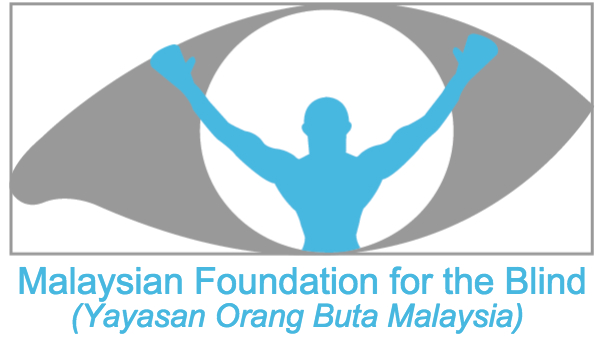Accessibility in Relations to Blindness
By Silatul Rahim Bin Dahman,
Founder and CEO | Accessibility And Diversity Specialist,
Malaysian Foundation For The Blind (MFB)
Silatulrahimdahman@gmail.com
most of the natural dangers or risk may not or not very likely be in the path of the blind, a very high percentage of such risks and dangers or if you would like to consider them as inaccessible is caused by the human race. It is the ignorance of men on how others move about, or the limitations of others hence, men design environment to only fit their own requirement.
What are the needs of the blind?
Safety first – All holes, drains are properly covered . Any drop of more than 8 inches be fenced up or provide some form of warning with railings.
Anything hanging in mid air should not be in the path of people walking. An example would be the part of staircases that are hanging in mid air. There are many such examples at LRT stations. Another of such examples are some of the road names in Brickfields. These road names should be moved to the side of the roads, perhaps, just around where the drains are. Likewise, there are also some traffic lights that are too low.Blind people walk with their cane as a guide. If the cane is not able to touch things that are in the air, then, there is a great possibility for them to bang.
Though it is understood that the blind people do not and cannot see, in order to allow the blind access, designers would have to have a clear mind as to how would the blind be able to make use of their invention or product. Example lights for the blind to cross a road. There mus be sound that is clear enough for the blind not just to know when it is the right time to cross, but to be able to locate the switch activate the light. If the blind can’t even find the where the button is, how can they use such crossing. Another example is the buttons on the lifts or the flush of a toilet. There must be a proper system either a fix location that is agreed by all. Surely, the blind are not expected to feel everywhere. If it is not possible to have audio indication, perhaps, a proper standard be set as to where such controls are being placed.
Since the blind do not have eyes that they can use, obviously the most practical thing to do is to replace all visuals with another alternative. Alternative to printed materials could be in the form of voice or Braille, Video and pictures can be provided with audio description. One very good example is the weather report on television. Instead of having a tabled and pictures on the screen, the news reader should also read out the table, which is done over the radio. Having it done this way will also benefit those people who have their TV on but not glued to the TV.
Specific problems found by travellers or tourists with disabilities include:
Inaccessible, or only partly accessible, web sites
- Lack of accessible airport transfer
- Lack of wheelchair accessible vehicles
- Lack of well-adapted hotel rooms
- Lack of professional staff capable of dealing with accessibility issues
- Lack of reliable information about a specific attraction’s level of accessibility
- Lack of accessible restaurants, bars, and other facilities
- Lack of adapted toilets in restaurants and public places
- Inaccessible streets and sidewalks
- Lack of technical aids and disability equipment such as wheelchairs, bath chairs and toilet raisers
Finally, making things accessible isn’t that difficult. Most of it is just being logical and to be able to put one self in the place of someone who is blind. I am sure accessibility for the blind is just not being discussed among the blind, in most cases, it is sighted people who take the trouble to think of the blind who have worked out standards so that the blind do not get missed out. Therefore, if there are so many people who can do it, I am sure all of you will be able to do likewise.
